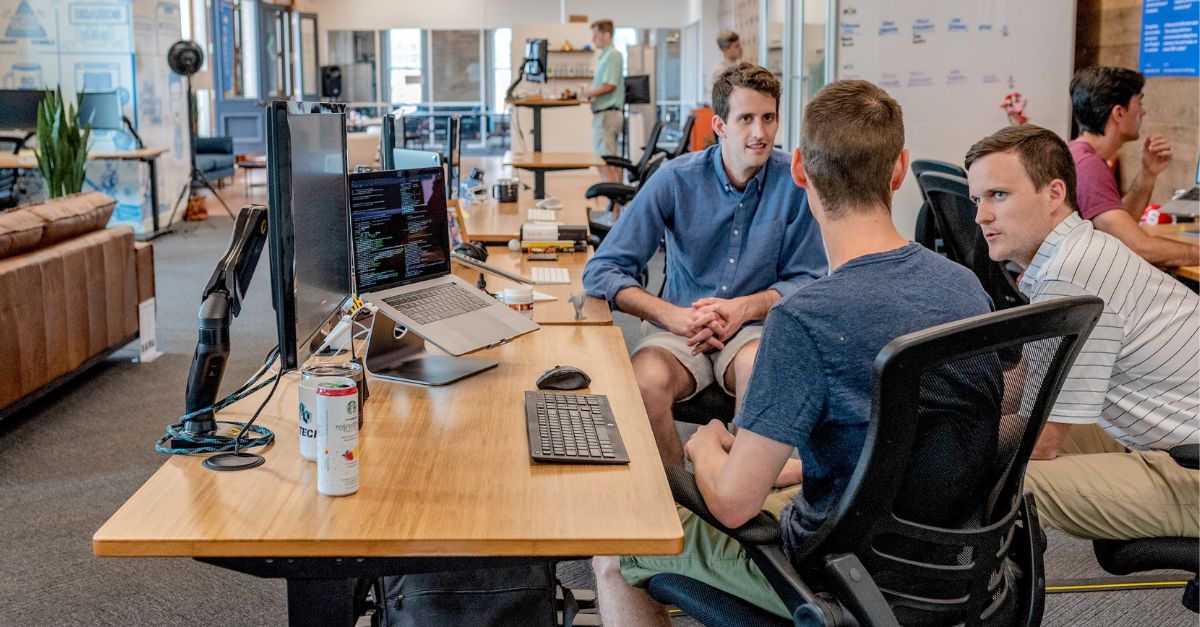3 min read
Building an App with Serverless & Cloud Run: A Simple Demo of Google Cloud Solutions
Businesses today are constantly seeking ways to streamline their operations and maximize efficiency. One technology that has gained significant...
7 min read
![]() Promevo
|
Apr 12, 2023
Promevo
|
Apr 12, 2023
Building scalable and reliable cloud-based applications on Google Cloud Platform (GCP) requires a different approach than traditional on-premises app development.
The cloud has its own challenges and opportunities that must be considered to ensure success, and before you start your next cloud-based project, you should be aware of these vital considerations.
One of the most critical considerations when designing cloud-based applications is microservices.
Microservices are software architecture patterns in which an application is broken down into small, independent components that can be developed, deployed, and scaled independently.
This approach has several benefits in the cloud, including:
Another important factor in building scalable and reliable cloud-based applications is managed services.
GCP offers a range of managed services, such as Cloud SQL, Cloud Functions, and Pub/Sub, that can be used to build and deploy applications without the need to manage the underlying infrastructure. These services can reduce the complexity and overhead of building and maintaining cloud-based applications, making it easier to focus on the business logic and functionality of the application.
In addition to microservices and managed services, several other best practices can help you design and build scalable and reliable cloud-based applications on GCP:
Let's dig a little deeper into these best practices.
Autoscaling is a feature that allows you to automatically scale the resources used by your application in response to changes in demand. This can help ensure that your application has the resources to handle traffic and workload fluctuations without manual intervention. In GCP, there are several ways to use autoscaling to manage the resources used by your application.
One way to autoscale in GCP is by using Managed Instance Groups (MIGs).
MIGs are a resource that allows you to manage a group of identical Compute Engine instances as a single entity. You can use MIGs to specify the minimum and maximum number of instances running, and GCP will automatically add or remove instances as needed to maintain the desired number. You can also set the maximum rate at which instances should be added or removed to control the scaling rate.
But that’s not all. You can also autoscale in GCP through Google Kubernetes Engine (GKE).
GKE is a managed service for deploying and running containerized applications in the cloud. You can use GKE to deploy your application in a cluster of nodes and then use autoscaling to automatically add or remove nodes as needed to handle changes on demand. GKE provides several options for configuring autoscaling, including the ability to scale based on CPU or memory usage or custom metrics.
In addition to MIGs and GKE, there are several other options for ways to leverage the power of autoscaling in GCP.
For example, you can use autoscaling with Cloud Functions to automatically scale the number of instances of your functions based on incoming requests. You can also use autoscaling with Cloud Run, a managed service for deploying containerized applications, to automatically scale the number of instances of your application based on incoming requests or custom metrics.
Overall, using autoscaling in GCP can ensure that your application has the resources to handle changes on demand without needing manual intervention. By configuring autoscaling for your application, you can take advantage of the elastic nature of the cloud and ensure that your application is always able to meet the needs of your users.
Monitoring and alerting are essential tools for ensuring the performance and reliability of your applications on GCP. By setting up monitoring and alerting, you can quickly identify potential issues with your application and take action to address them before they become more serious.
You will need to use the Cloud Monitoring service to implement monitoring and alerting in GCP. Cloud monitoring allows you to collect and analyze data about the performance and availability of your applications, as well as the underlying infrastructure resources that support them, providing an assisted data analysis tool for optimizing application performance. With Cloud Monitoring it’s easy:
To set up monitoring and alerting in GCP, you will need to define the metrics and alerts you want to track, and then you’ll need to configure the monitoring and alerting tools to collect and analyze the data. You can do this using the GCP Console or the Cloud Monitoring API.
By implementing monitoring and alerting in GCP, you can ensure that you are aware of any potential issues with your application and can take action to resolve them quickly. This can help you maintain the performance and reliability of your applications and can ultimately lead to a better user experience.
Load balancing is a technique for distributing incoming traffic across multiple instances of an application to improve performance and reliability. You can use load balancing to ensure that your application can handle high traffic and workloads without becoming overwhelmed or unavailable.
GCP provides a few tools and services that you can use to implement load balancing for your applications. Some of the most common options include:
A multi-regional architecture allows you to deploy your applications across multiple regions to improve availability and ensure disaster recovery. Using a multi-regional architecture, you can ensure that your applications are resilient to outages and can continue operating even if one region becomes unavailable.
GCP provides several tools and services that you can use to implement a multi-regional architecture for your applications. Some of the key considerations when designing a multi-regional architecture include the following:
Using a multi-region architecture on GCP ensures that your applications are highly available and can recover quickly in the event of an outage or disaster. This can help you maintain the performance and reliability of your applications and ultimately provide a better user experience.
Security and compliance are critical considerations when building and deploying applications to the cloud. That’s where GCP’s Security Command Center comes into play because it’s highly important to protect your application and data and to ensure that your applications meet relevant compliance standards.
Some of the key security and compliance features that GCP offers include:
By taking advantage of GCP's security and compliance features, you can ensure that your applications and data are protected and that your applications meet relevant compliance standards. This can help you build and deploy applications confidently and ensure that your applications are secure and compliant.
Designing and building scalable and reliable cloud-based applications on GCP requires focusing on microservices, managed services, and various other best practices. By following these
principles, you can build optimized applications for the cloud and take advantage of the many benefits of the platform.
There are several reasons your company should consider Promevo Cloud Services Consulting when designing and building scalable and reliable cloud-based applications on GCP as part of your migration from on-premises to the cloud.
First, we have a team of experienced GCP Certified Cloud Architects who deeply understand the platform and follow best practices for designing and building cloud-based applications. This expertise can help ensure that your applications are optimized for the cloud and take advantage of the many benefits of GCP.
Second, we have a proven track record of successfully delivering complex cloud projects for our clients. We have helped many companies migrate their on-premises applications to the cloud, and we have the skills and experience to ensure that your migration is smooth and successful.
Finally, we offer various services and support options to help you get the most out of your cloud investment. This includes training and mentorship for your team, ongoing support and maintenance, and help with continuing optimization and cost management.
Promevo is well-equipped to help you design and build scalable and reliable cloud-based applications on GCP as part of your migration from on-premises to the cloud.
If you need scalable and reliable cloud-based applications built on GCP, trust Promevo Cloud Services Consulting.
At Promevo, we help you harness the robust capabilities of Google to accelerate growth and give you the momentum you need to achieve your most ambitious goals.
Our team of experienced GCP Certified Cloud Architects command a deep understanding of the platform and excel at designing and building custom cloud-based applications.
As your trusted service partner, Promevo supports your business with a robust suite of services, including:
With Promevo’s expert consultation, comprehensive support, and exceptional service from end-to-end, you can streamline the development of your custom cloud-based applications on Google Cloud Platform like never before.
Meet the Author
Promevo is a Google Premier Partner for Google Workspace, Google Cloud, and Google Chrome, specializing in helping businesses harness the power of Google and the opportunities of AI. From technical support and implementation to expert consulting and custom solutions like gPanel, we empower organizations to optimize operations and accelerate growth in the AI era.

3 min read
Businesses today are constantly seeking ways to streamline their operations and maximize efficiency. One technology that has gained significant...

5 min read
Google Cloud APIs (application programming interfaces) give teams the freedom to automate workflows using their favorite language. Cloud APIs are a...

3 min read
The Google Cloud Platform (GCP) levels up every aspect of your business. But is your cloud as secure as it could be? The GCP’s built-in cloud...